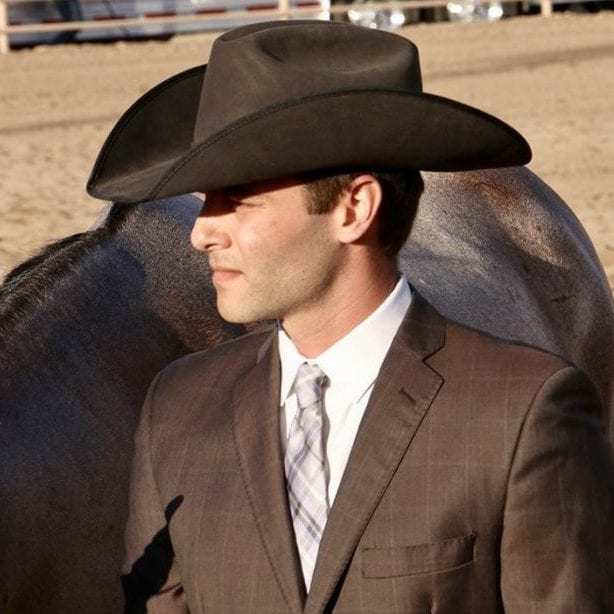“Where have all the good men gone?”
While most will recognize this as the catchy first line to Bonnie Tyler’s famous song, “Holding Out for a Hero,” it is also a question one might think when looking around the showmanship pen. While male exhibitors are more prevalent in classes such as western pleasure, western riding and trail, you can be hard-pressed to find more than one or two who choose to show in showmanship from weekend-to-weekend.
Despite this, men seem to come out on top often in this competitive class. This then begs the question: Is the showmanship pen an equal playing field for both men and women?
Showmanship is arguably one of the most challenging classes offered in AQHA competition, and most will agree that taking top honors in this event requires more than just the average performance. In a class of twenty or thirty equally talented exhibitors, it can be difficult for even the best to stand out among the crowd. Some argue that male exhibitors easily overcome this disadvantage because they receive a second look, or “boy points,” when setting up at the cone in showmanship.
While undeniably the top placing goes to the exhibitor who executes the best pattern, the question remains: Do men have any kind of advantage over women in the showmanship pen?
Let’s find out how several top exhibitors feel regarding this topic. And be sure to voice your opinion on the subject in our reader poll below.
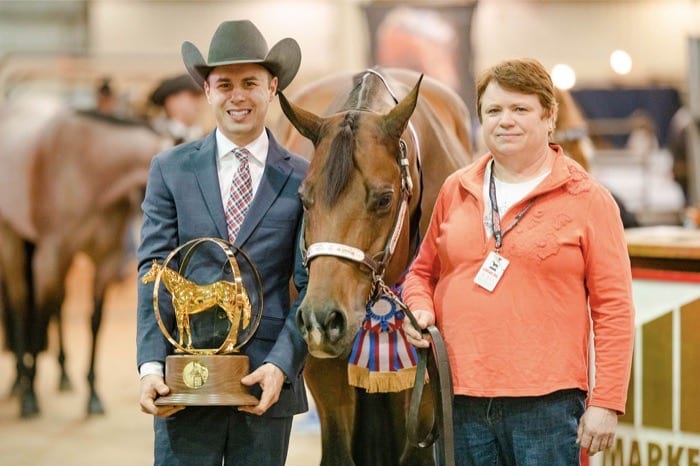 Tony Anderman – 2017 and 2018 AQHA World Champion in Amateur Showmanship – I think the biggest advantage men have is that we never have to unlearn the exaggerated mannerisms that some women are taught. For years, judges have been saying they don’t want exhibitors looking unnatural in the showmanship, e.g., squatting when they run, mannequin-like movements, or insincere facial expressions. Men are still required to have good posture and position, but it does not ever have to be overdone. Otherwise, I feel like men and women are on a pretty equal playing field when they enter the show pen.
Tony Anderman – 2017 and 2018 AQHA World Champion in Amateur Showmanship – I think the biggest advantage men have is that we never have to unlearn the exaggerated mannerisms that some women are taught. For years, judges have been saying they don’t want exhibitors looking unnatural in the showmanship, e.g., squatting when they run, mannequin-like movements, or insincere facial expressions. Men are still required to have good posture and position, but it does not ever have to be overdone. Otherwise, I feel like men and women are on a pretty equal playing field when they enter the show pen.
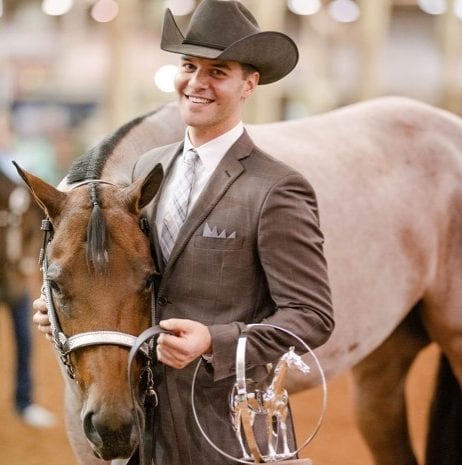 Eric Mendrysa – 2018 AQHA Reserve World Champion in Amateur Showmanship – I think that at times, a male exhibitor can stand out because of fewer men showing in the class. I try to keep my style of showmanship in the realm of a professional lawyer trying to win an important case – professional, charismatic, and precise. At the end of the class, the last man or woman standing when it counts the most – has nailed the marks of the pattern and separated themselves, in my opinion, not based on gender, but rather, the most professional execution of the pattern that day.
Eric Mendrysa – 2018 AQHA Reserve World Champion in Amateur Showmanship – I think that at times, a male exhibitor can stand out because of fewer men showing in the class. I try to keep my style of showmanship in the realm of a professional lawyer trying to win an important case – professional, charismatic, and precise. At the end of the class, the last man or woman standing when it counts the most – has nailed the marks of the pattern and separated themselves, in my opinion, not based on gender, but rather, the most professional execution of the pattern that day.
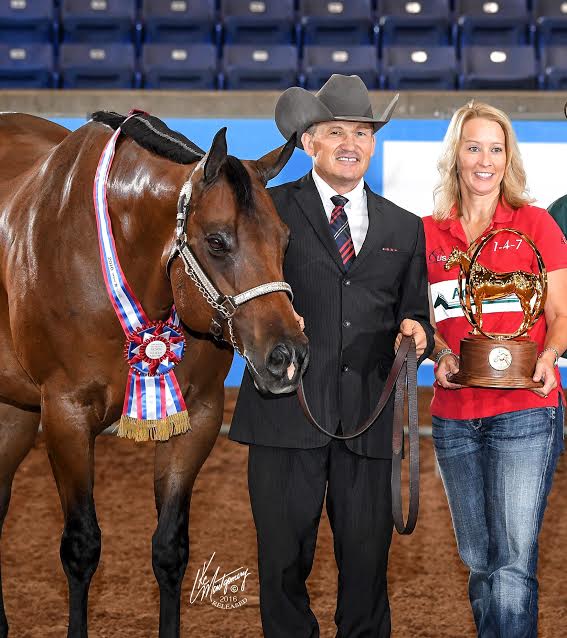 Patrick “Kip” Riley – 2016 AQHA World Champion in Select Amateur Showmanship – Quite simply, what may be seen as an advantage to some may just as well be seen as a disadvantage to others. We often hear about the “guy” advantage in showmanship. Top exhibitors, regardless of their gender, are successful because they have perfected their craft and become one with their partner, the horse. If an exhibitor suffers poor position or posture, there is no amount of bling or lack thereof that is going to cover up the fault.
Patrick “Kip” Riley – 2016 AQHA World Champion in Select Amateur Showmanship – Quite simply, what may be seen as an advantage to some may just as well be seen as a disadvantage to others. We often hear about the “guy” advantage in showmanship. Top exhibitors, regardless of their gender, are successful because they have perfected their craft and become one with their partner, the horse. If an exhibitor suffers poor position or posture, there is no amount of bling or lack thereof that is going to cover up the fault.
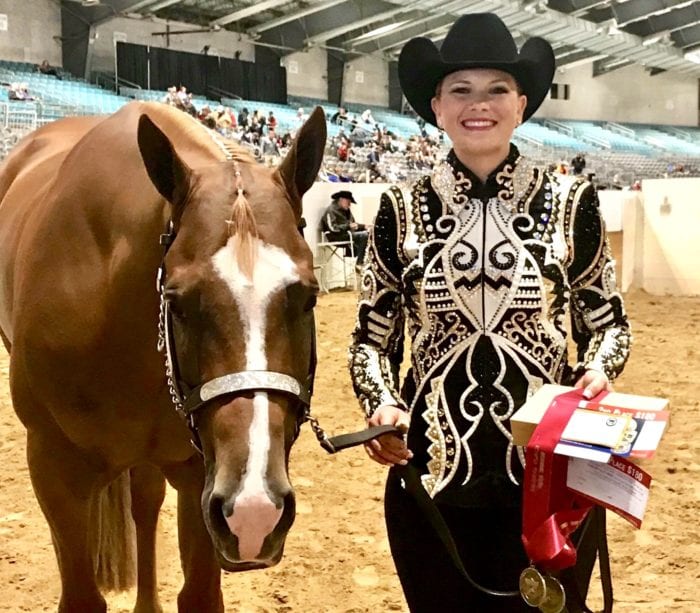 Whitney Vicars – AQHA World Champion in Amateur Showmanship – I do not believe that men start with an advantage simply because of gender. A showmanship team will naturally develop a touch of their style unique to them. Style will help set a showmanship team apart in the crowd. I do not personally feel that attire is an advantage or disadvantage in showmanship. If an exhibitor has flaws in their positioning or posture, it will be noticed during their performance regardless.
Whitney Vicars – AQHA World Champion in Amateur Showmanship – I do not believe that men start with an advantage simply because of gender. A showmanship team will naturally develop a touch of their style unique to them. Style will help set a showmanship team apart in the crowd. I do not personally feel that attire is an advantage or disadvantage in showmanship. If an exhibitor has flaws in their positioning or posture, it will be noticed during their performance regardless.
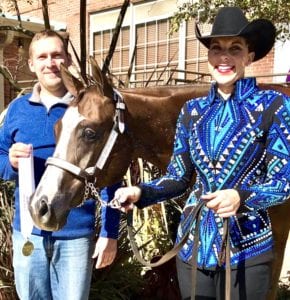 Hailey Thornton –AQHA Congress Champion in Amateur Showmanship – I do feel that if a man goes in and lays out a clean pattern and looks well put together, they’re hard to get around. Also, there are not many men that are really into the showmanship like the girls, so when you see the handful of guys that are put together and crisp, I think it grabs everyone’s attention and makes you want to watch them. It’s not just another girl. It’s something different to watch. I know it catches my attention and makes me want to watch.
Hailey Thornton –AQHA Congress Champion in Amateur Showmanship – I do feel that if a man goes in and lays out a clean pattern and looks well put together, they’re hard to get around. Also, there are not many men that are really into the showmanship like the girls, so when you see the handful of guys that are put together and crisp, I think it grabs everyone’s attention and makes you want to watch them. It’s not just another girl. It’s something different to watch. I know it catches my attention and makes me want to watch.
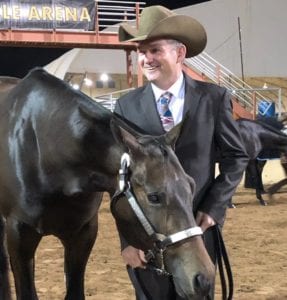 Thad O’Boyle – AQHA Congress Champion in Amateur Showmanship – I have concluded that the judges are looking for an exhibitor that has the connection with their horse to make it look effortless, as to the horse and person performing as one unit similar to pairs figure skating or ballroom dancing. As far as attire, the show outfits need to be neat and well-fitted, whether you are male or female. One difference I have noticed is that most guys have a more significant stride that matches the horse stride-for-stride, where the girls are trying to be as bold with speed and quickness – but this can take away from the perfect picture you are trying to achieve.
Thad O’Boyle – AQHA Congress Champion in Amateur Showmanship – I have concluded that the judges are looking for an exhibitor that has the connection with their horse to make it look effortless, as to the horse and person performing as one unit similar to pairs figure skating or ballroom dancing. As far as attire, the show outfits need to be neat and well-fitted, whether you are male or female. One difference I have noticed is that most guys have a more significant stride that matches the horse stride-for-stride, where the girls are trying to be as bold with speed and quickness – but this can take away from the perfect picture you are trying to achieve.
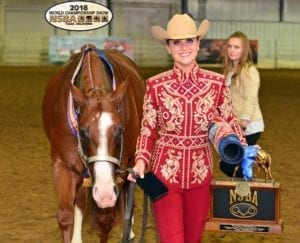 Abigail Buckwalter – NSBA World Champion in Amateur Showmanship – Overall, I think there are fewer men in our sport who are doing showmanship, equitation, and horsemanship, so naturally, I think it catches a judge’s eye when a male is in in a class full of women. I’m sure they stand out to a judge when the competitor is good at the class, and they go in and lay down a great pattern with their horse. Most of the men I compete against, and get beat by, deserve to beat me because they are outstanding, and I enjoy the challenge of competing with and against them. It’s personally a good day for me when I place ahead of them.
Abigail Buckwalter – NSBA World Champion in Amateur Showmanship – Overall, I think there are fewer men in our sport who are doing showmanship, equitation, and horsemanship, so naturally, I think it catches a judge’s eye when a male is in in a class full of women. I’m sure they stand out to a judge when the competitor is good at the class, and they go in and lay down a great pattern with their horse. Most of the men I compete against, and get beat by, deserve to beat me because they are outstanding, and I enjoy the challenge of competing with and against them. It’s personally a good day for me when I place ahead of them.
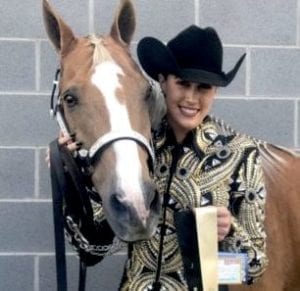 Emily Ambrose – AQHA Congress Top 10 – Youth Showmanship 15-18 – I, as well as other exhibitors, have been frustrated many times when a boy laid out a correct pattern, but not a crisp one, and ended up placing higher on multiple cards. While correct is good in the Level 1 events, it is critical to be both accurate and brisk in the Level 3.
Emily Ambrose – AQHA Congress Top 10 – Youth Showmanship 15-18 – I, as well as other exhibitors, have been frustrated many times when a boy laid out a correct pattern, but not a crisp one, and ended up placing higher on multiple cards. While correct is good in the Level 1 events, it is critical to be both accurate and brisk in the Level 3.
***
In the end, all those interviewed agreed that while a male exhibitor may get a second look from the judges, it doesn’t automatically guarantee a top placing. Regardless of gender, confidence and style are what will get an exhibitor top placings in the showmanship pen.
AQHA World and Congress Champion Whitney Vicars leaves us with this piece of advice regarding what sets top showmanship exhibitors apart, “Confidence comes from making that connection with your horse and then spending the time needed in experiences to grow you and your horse’s confidence to a high level. There is just a difference in watching someone who performs their patterns with a confident and controlled look about them versus someone who comes across timid. It’s kind of like a model on a runway; you’ve got to strut your stuff and own it.”
About the Author – A native of Northwest Pennsylvania, Kelli Hardy has been a lover of horses and all things AQHA for as long as she can remember. She graduated from Edinboro University with a BA in English literature and a minor in writing and currently is a high school English teacher at Erie First Christian Academy in Erie, PA. In her spare time, she shows AQHA in Amateur all-around events with her mare, Pretty Girls Rock.


